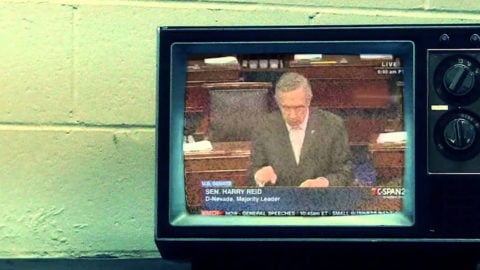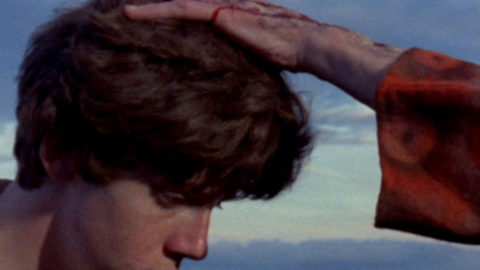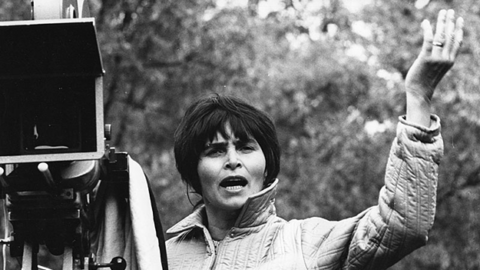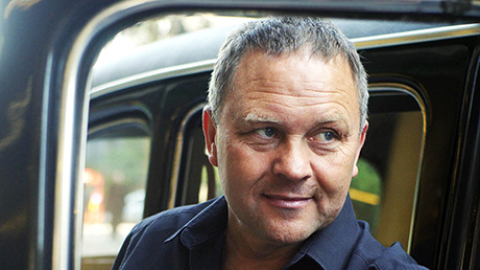Interview: Helena Třeštíková
Born in Prague and educated at the renowned Czech film school FAMU, Helena Třeštíková has been making documentaries for over four decades. From intimate, intensely observed stories with one protagonist, to multi-generational family portraits, Třeštíková has perfected what she calls a “time-lapse” method. Her films sometimes span decades, and require laborious editing, thus allowing her to reflect on the nature of time. As she said in her thesis presented when being confirmed for a professorship, she strives to look at each life as a narrative, and treats narration as a form of knowledge: “The predominant part of human experience is in a narrative form. We grow up in stories; we are surrounded by stories; and we perceive our own life as a story.” In other words, “We ourselves are just stories that we tell about ourselves.”
From an imprisoned young man in René (2007), to a young woman who struggles with a debilitating drug addiction and motherhood in Katka (2010), to the families weathering highs and lows in Marriage Stories (1987) and Private Universe (2012), Třeštíková lavishes her empathic attention on minutiae without losing sight of the bigger picture. In her words she follows the “crack that gradually grows until we encounter a crisis of self-conception and are forced to formulate our story once again.” Katka must undergo a long painful realization of her own shortcomings and failures before she can finally acknowledge her need to let go of the responsibility of motherhood. Throughout, Třeštíková, a patient, consummate storyteller, is always ready to search for meaningful gaps, slippages and sparks of recognition that slowly recompose a life.
In some ways, she can be compared to a number of European documentary filmmakers who emerged in the 1960s and ‘70s, among them, Krzysztof Kieślowski, Marcel Łoziński, or Michael Apted and Paul Almond of the 7 Up! series. But where Kieślowski, for example, juxtaposes dancers of different ages in Seven Women of Different Ages (1979) to suggest, via pointed metaphor, how a woman’s vivacity and desire change throughout a lifetime, or where Łoziński returns to the same protagonist some 20 years later (in The Visit, 1974, and then So It Doesn’t Hurt, 1998) or as Apted and Almond catch up with the same group every ten years, Třeštíková abstains from metaphor, in favor of concreteness, and privileges continuity. The transformations that she makes us privy to are subtle; our perception of its effects gradual. The result is not so much a nostalgia for or a reflection on the past, which we experience in Kieślowski or Apted and Almond, as a vertiginous unraveling of potential—together with her protagonists, we want to believe that anything can still change, that time is not inexorable.
For Film Comment I spoke with Třeštíková at the International Documentary Film Festival Amsterdam (IDFA), which presented a program of her work, as well as the “top 10” documentaries.
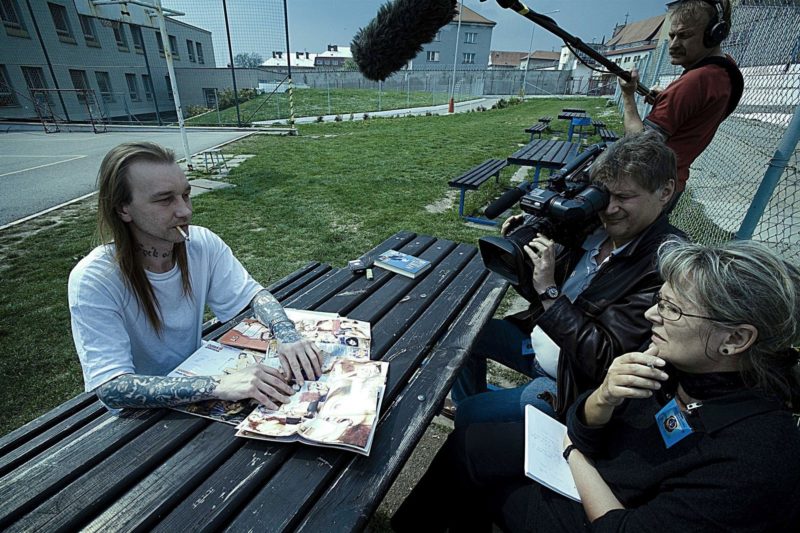
Helena Třeštíková shooting René (2007)
I was struck that the 10 documentary filmmakers you chose—including Chytilová, Kieślowski, and Georges Rouquier—use fictional elements. Yet you never use such elements yourself.
I am more of an observer. I capture truth without interfering, without arranging the situation. I wouldn’t know how to use fictional elements, and never include them, but when other directors use them well, it’s wonderful. It really speaks to me when someone captures time in that way. The films I chose really influenced me because they made me see that film could be something wonderful. Yes, there are moments of staging, but what struck me was the cinematography, the way they were able to observe people, present the time in which they were shot, and express duration. Duration of daily life has always fascinated me.
It seems you take a different risk instead, which has precisely to do with the duration of your shoots. Katka, for example, grows so attached to you she treats you like a confessor.
There is an emotional risk, of course, and a very practical risk as well, since the protagonist may decide not to continue filming—although that has not happened to me so far.
With the young man, René, there is almost a psychoanalytic transference—he confesses that he has fallen in love you.
I do this work because I want to, voluntarily, so I need to be able to cope with the risks and shelter the emotional burden. I have to be able to cope and not break down.
Did that burden ever make you want to move into fiction films, as Kieślowski did, for example?
Never. My ambition is to capture time, and to be truthful in portraying it, to create an image of time. Fiction doesn’t fulfill this ambition. Using my time-capsule method, if I were to script a life I think my assumptions would always be wrong. It is a lesson to be humble in the face of real people, because we can never script reality as surprisingly as life does. Life writes better stories.
Yet I imagine it’s harder to find the narrative arc when you film for so long, or to let go and finish the film, when it becomes such a part of someone’s life.
Sometimes endings are dictated by production agreements, a film has to be ready by a certain deadline. For example, with René, we had to wind it up by 2007, so the year before that I started thinking how the film could end. I knew René would be released from jail, and I was going to give him the camera to shoot his own ending, particularly his first days of freedom, to represent what freedom meant to him. But unfortunately, René decided to use the camera for some porn films, and ended up losing his original footage.
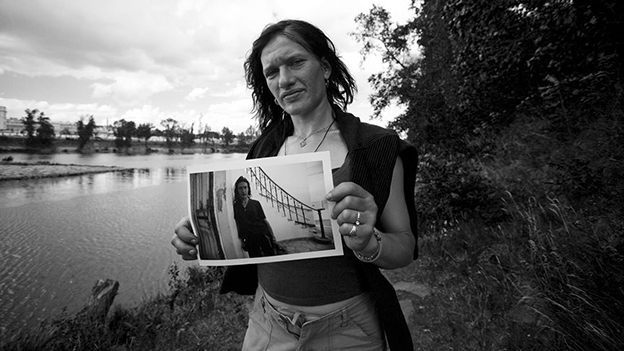
Katka (2010)
In your films with many family members, such as Private Universe (2012), there is also the question of handling multiple storylines. What is your editing process like?
I first read through the transcripts. It’s almost like writing a script, but one based on my actual video materials. This then boils down to about 45 hours of footage that we take to the editing room, where we work on a number of versions. My editor is very active as a dramaturg. We’ve been working together for 10 years, since René. We have such great rapport I cant’ imagine working with another editor. The other important person is my husband who is a dramaturg as well. He usually sees the five-hour version and then helps me edit. He is very critical, which is good. Then there are also other dramaturgs.
Your more recent film, Doomed Beauty (2016), is on Lída Baarová, who was a controversial star and Joseph Goebbels’s mistress, yet isn’t nearly as well known as, let’s say, Leni Riefenstahl. How did you come upon her story?
In 1995 I was preparing a film for Czech Television about Lucerna, a famous cinema in Prague. Baarová was then living in Salzburg, and I thought if I went to Salzburg I had to make a film not just about the building, but about her too. I found materials about her life and about Czech cinematography from the 1930s. I went to Salzburg prepared, but it was actually one of the most horrible shoots in my life. Baarová was very moody, an alcoholic. We only had three days, but we came late from Prague due to horrible weather. We had no cell phones to warn her. She was angry and threw us out. So we had only two days! And she was drinking. But by the time we were leaving she hugged me and said she wanted to adopt me. It was quite an experience.
I’m very interested in early 20th-century cinema. Originally we didn’t have enough time to edit or to acquire more archival material, but some time later we applied for funds. We asked Czech TV and Czech Fund for Cinematography. A film like this is expensive, especially the German and Italian archives, since Baarová worked with Rossellini and Fellini. By that time she was dead: she died in 2000.
Baarová’s account is extremely one-sided and self-serving. You succeed in making us engage with her, yet also manage to create a critical distance, via archival footage.
I hate talking heads, so instead I deliberately used the archives to create detachment. For example, when Baarová says that Goebbels was such a charming, cultured man, the footage shows him burning books. When she talks about making La Fornarina (1944), I put it in juxtaposition with the Nazi Party Congress. She is making this trashy sentimental film, while the rest of Europe faces a horrible reality. Of course, what mattered to me was certain ambivalence. I don’t like things to be black and white. I want the audience to understand her, but I want also it to feel a critical distance.
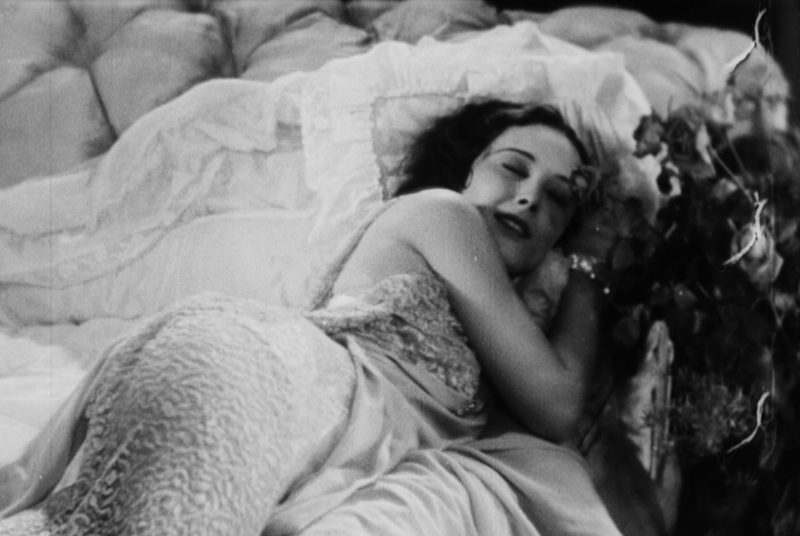
Doomed Beauty (2016)
You have a commitment to your protagonist, but also to history and to truth.
In essence that is why it is so hard to make documentaries.
I want to come back to Chytilová, with whom you share an affinity. You included two of her films in your Top 10. What strikes you about her work?
When I first saw her Something Different (1966) I was 13. I was struck how free her work was of ideology. It was a breath of fresh air. Now I’m struck how modern she continues to be. How timeless in camerawork and editing. Chytilová’s Prague – The Restless Heart of Europe (1985) is also very important, because of its film language. I’ve seen a lot of boring films about Prague, and here suddenly we see how exciting such a seemingly boring topic can be. The voiceover is very emotional. Chytilová hired an actor, Miroslav Macháček, for the voiceover, because she wanted it to be very expressive.
Something Different could be called a feminist film, though Chytilová disliked the term. Do you see yourself as tackling feminist themes in portraying women’s struggles?
I’ve always been against anything that’s explicitly or extremely ideological. I do think that I can be a feminist without wearing the label on my sleeve. My mother, for example, was an artist and made more money than my father. It was never an issue in my family. I never really encountered obstacles, so it was not something that I felt I had to specifically address, but rather something that I have always lived with my family, my husband and children. It’s important that they accept my work. And in Czechoslovakia, there were other women documentary filmmakers. These days that parity is more 50 / 50.
Ela Bittencourt works as a critic and curator in the U.S. and Brazil and is a member of the selection committee for It’s All True International Documentary Film Festival in São Paulo.



